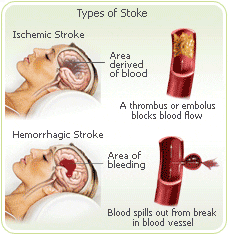The stroke burden in India is surging according to recently-reported data from the Indian Stroke Association. This is in stark contrast to high-income nations which have, on average, seen rates gradually decline.

The Indian Stroke Association claimed that India’s burden increase has amounted to almost a 100 percent increase over the last few decades. Dr MV Padma Srivastava, head of the Neurosciences Centre at the All India Institute of Medical Sciences (AIIMS) says, “stroke has become the fifth leading cause of death in 2016 from [the twelfth leading] cause in 1996 and claims 119-145 lives in every 100,000 population…every year, 1.8 million people suffer stroke in India, but we have only about 2,000 neurologists.”
This lack of trained medical experts capable of dealing with the ever-growing number of individuals suffering from strokes is felt more strongly in rural areas. “Our study in rural India showed that mortality is higher than the Indian average,” commented Dr. Jeyaraj Pandian, vice president of the World Stroke Organization (WSO) “In Gadchiroli, Maharashtra, it was found to be 194 in every 100,000 population while rural areas around Ludhiana, Punjab, the mortality is 210 in every 100,000 population.
“The gaps in India include prehospital care, stroke services, thrombolysis and rehabilitation of stroke patients that we need to address to bolster our continuum of care.”
Shifting lifestyle factors such as the increase in office-based, physically undemanding occupations, as well as dietary shifts to unhealthy, overly processed foods, have considerably increased the presence of risk factors for strokes within India.
“Many of the risk factors associated with a stroke are similar to those of heart disease,” as previously noted by Health Issues India. “Obesity, lack of exercise and smoking are all well-established risk factors. While the condition may not always be lethal, it can cause severe disability. In poor families who cannot afford care or treatment, this can later result in the individual passing away.”
For the burden of stroke to be properly addressed, diagnostic services must improve. A key issue, particularly in rural locations where access to healthcare is limited, is that the condition often goes undiagnosed. For many this can severely impact the quality of their life moving forwards. For diagnostic services to be improved, the considerable gap in trained personnel must first be addressed — a task that is unlikely to be solved within a short period of time.

